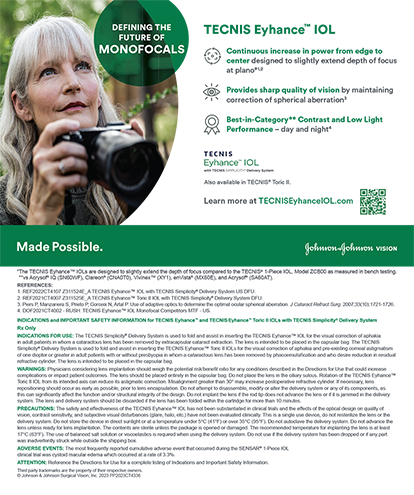
Many roads lead to Rome and probably more to successful cataract removal. Divide-and-conquer, multiple variations of chop techniques, and many other ways to remove a cataract during phacoemulsification have been described and are widely taught around the globe. For this back-to-basics cover series, I want to focus only on the simplest principles of successful nucleus cracking.
I have been teaching cataract surgery to residents and fellows for more than 20 years. A common trait of all these young ophthalmologists-in-training was that they had been taught cataract surgery elsewhere before coming to my clinic. My observation was that their strategies to perform cracking were always basically the same, coinciding with the traditional ideas of the divide-and-conquer technique: that is, to sculpt as deep as possible before attempting a cracking maneuver.
The big issue with performing deep sculpting until the phaco tip is close to the level of the posterior capsule is that inexperienced surgeons can become very nervous in the last stage of very deep sculpting. This nervousness is exponentially aggravated when a posterior capsular rupture occurs as they are going deep. At this juncture, residents and fellows become highly stressed and anxious, which results in a high muscle tone and decreased control of manipulation.
TWO PRINCIPLES
My approach to performing simple and successful cracking is based on two major principles:
- No. 1. Crack at the point of highest resistance; and
- No. 2. Proper placement of the phaco tip and cracking instrument is of absolute importance.
Regarding the first principle, I advocate cracking directly after the first trench is created. The middle of the lens has the highest density and offers the highest resistance to cracking. Cracking here, therefore, minimizes the chances of having the second instrument slice through a softer part of the lens and not split the lens fibers. This occurs much more readily in a conventional technique of sculpting all four trenches first and cracking thereafter. When we are dealing with nuclei of soft to medium density, quite a lot of the trench walls tend to be already taken down, resulting in very little surface for successful cracking.
Watch It Now
Regarding proper placement of instruments, this is actually very easy to do, but it requires the surgeon to have the right focus to implement this second principle at the right time. In my teaching, what I have witnessed numerous times is that, at the final time of the cracking motion, either one or both instruments are lifted slightly upward during the splitting action. This is caused by fear of damaging the posterior capsule, similar to the fear that occurs during deep sculpting.
HEMI-CRACKING
Another maneuver that will result in a successful crack is what I call hemi-cracking. This is performed right after the first trench, which does not need to be very deep. The phaco tip is lightly pressed downward, and the second instrument is placed as deep as possible. The key to doing this correctly is to keep both instruments lightly pressed downward on the bottom of the groove. Although this may seem dangerous and scary, it is not, because the first groove does not have to be very deep.
Subsequent grooves are much easier to crack, as there is already a reference because of the first full split into two halves. Proper placement of the tip and second instrument is again vital. Rotating the phaco tip clockwise to facilitate easy access for the second instrument to the very bottom of the groove is a simple and effective trick.
I have found this technique to be easy to teach to my students. They gain confidence much faster than with the original four-groove-then-crack method. I hope that this brief explanation and the accompanying video will be of help to you.




